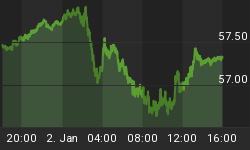The greenback is meeting strong resistance at current levels. It could contract and the British pound should outperform most majors. Let us look at why.
U.S. Dollar: Key resistance line tested
Is the dollar's uptrend challenged? The price is bouncing against the higher channel line. A decline is possible, considering that futures funds have massively bet in favor of the greenback, according to the latest report of the Commitments of Traders (COT). On the contrary, short positions held by funds are at record lows. Historically, the dollar has shown a tendency to top-out in mid-year and to bottom near year-end. As a result, a breakout failure would set a downtrend for the next four to five months. The world economy is contracting and the Federal Reserve has few measures left. During the June meeting, two members were in favor of QE3.

However, sentiment may change in the next several months if the unemployment rate does not improve substantially. The coming debt ceiling and the so-called fiscal cliff should increase uncertainty. This increased fiscal burden may coincide with the end of the current Operation Twist, resulting in a significant challenge for the U.S. economy in the first half of 2013. At the contrary, the U.K. maintains its AAA status. The government is implementing austerity measures that will help the economy over the longer-run. The British pound, in particular, could benefit from the fair amount of liquidity that shelters the British economy and banks from the euro zone's problems. A move above 1.5870 would target 1.60/1.62.

Italian debt downgraded
After falling in March and April, European industrial production increased 0.6% in May. The sector remains, however, weak and fragmented. In fact, while it rose to near historical highs in Germany, industrial production declined to near all-time lows in Spain and Italy. The two nations are under extreme pressure from rating agencies. Italian debt was just slashed by Moody's to a Baa2 from A3. The agency does not think the measures taken by the Monti government are enough to bring the country back on track. In reality, decisions are not always even-handed.
In the past, rating agencies waited until Japanese government debt to pass 130% before acting. However, Spain lost its triple-A rating in 2009, when its debt was only 40% of GDP, and the rating has been cut five times since then, despite the efforts of the Spanish government to reduce its debt. Under these conditions, it is virtually impossible for Spain and Italy to rely on the markets for capital. The only practicable solutions are the European bailout funds (EFSF and ESM). The euro will remain under pressure. The 1.20 level is still in the cards against the U.S. dollar. Nonetheless, the market is also extremely oversold and could eventually try to bottom in the coming weeks.
















